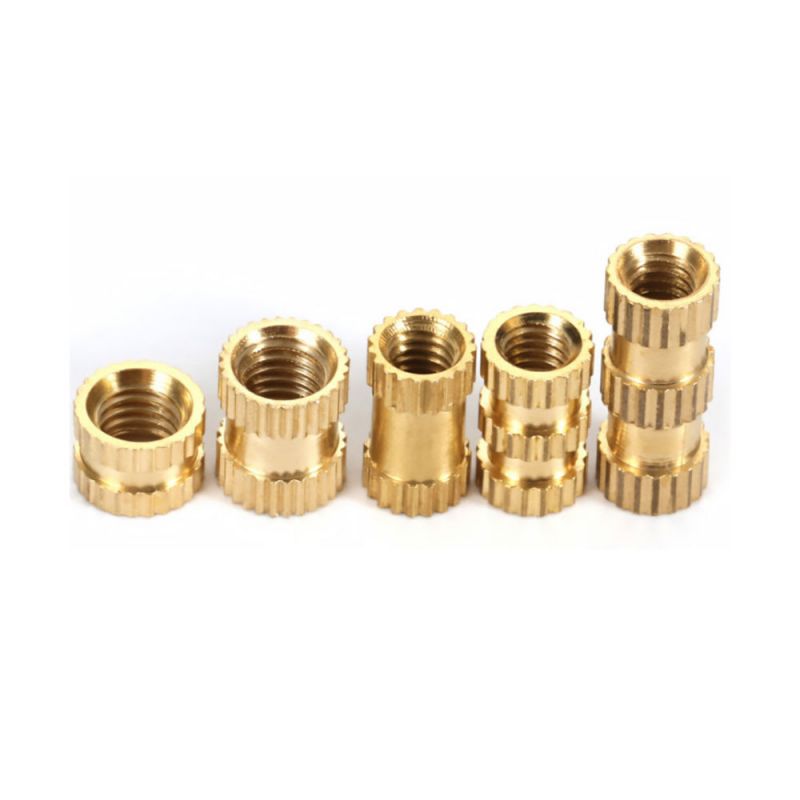- English
- Español
- Português
- русский
- Français
- 日本語
- Deutsch
- tiếng Việt
- Italiano
- Nederlands
- ภาษาไทย
- Polski
- 한국어
- Svenska
- magyar
- Malay
- বাংলা ভাষার
- Dansk
- Suomi
- हिन्दी
- Pilipino
- Türkçe
- Gaeilge
- العربية
- Indonesia
- Norsk
- تمل
- český
- ελληνικά
- український
- Javanese
- فارسی
- தமிழ்
- తెలుగు
- नेपाली
- Burmese
- български
- ລາວ
- Latine
- Қазақша
- Euskal
- Azərbaycan
- Slovenský jazyk
- Македонски
- Lietuvos
- Eesti Keel
- Română
- Slovenski
What is the difference between brass and copper fasteners?
2024-10-30

What is the difference between copper and brass?
Although brass and copper look similar, they have different properties that make them suitable for various applications. Copper is a pure metal that has high thermal and electrical conductivity, while brass is an alloy that consists of copper and zinc. Brass has high corrosion resistance and a gold-like appearance, whereas copper has a reddish-orange color. Additionally, copper is a more efficient conductor of electricity and heat compared to brass, but brass is more malleable and ductile.
What are the advantages of using brass fasteners?
Brass fasteners offer several benefits, including:
- Corrosion resistance
- High-temperature resistance
- Malleability and ductility
- Long-lasting and durable
- Low friction coefficient
Where are brass fasteners used?
Due to their properties, brass fasteners are commonly used in various applications, including:
- Plumbing and electrical applications
- Automotive and marine industries
- Heating and cooling systems
- Furniture manufacturing
- Construction and architecture
In conclusion, brass fasteners are an essential component in various industries due to their unique properties. They offer excellent corrosion and temperature resistance while being malleable and ductile. They are used in plumbing, electrical applications, and heating, among others. If you need high-quality brass fasteners for your project, consider Dongguan Fuchengxin communication technology Co. Ltd. We are a leading manufacturer of brass fasteners, committed to delivering quality products and services. Contact us today via email at Lei.wang@dgfcd.com.cn or visit https://www.fcx-metalprocessing.com for more information.
Research Papers
1. Iqbal, K., Ehsan, M. F., Irfan, M., Aslam, M., & Hasan, M. M. (2020). Experimental investigation and numerical simulation of brass tubing under internal pressure. Journal of the Brazilian Society of Mechanical Sciences and Engineering, 42(7).
2. Zhang, T., & Zhao, H. (2019). Laser beam welding of aluminum alloy and brass with filler wire addition. Journal of Materials Processing Technology, 265, 116-125.
3. Praharaj, S., Kumar, H., & Jha, S. K. (2021). Evaluation of the performance of brass foam core sandwich panel under bending. Journal of Sandwich Structures & Materials, 23(4), 1072-1092.
4. Lu, L., Li, C., Cai, L., Fang, X., & Zhang, T. (2019). Microstructural features and mechanical properties of banded microstructure in a brass sheet deformed by shot peening. Materials Science and Engineering: A, 758, 16-27.
5. Wang, Y., Huang, K., Wu, G., & Wang, J. (2019). Effect of laser welding on the microstructure and mechanical performance of brass/stainless steel composite plates. Journal of Materials Engineering and Performance, 28(11), 6844-6853.
6. Das, R., & Dey, S. (2020). Investigation on machining characteristics of brass alloy CZ 121 under different machining environments with MQL. Journal of Manufacturing Processes, 59, 250-255.
7. Sharma, A., & Garg, A. (2019). Electrical, mechanical and thermal properties of microwave sintered brass powder compacts. Materials Today: Proceedings, 11, 293-298.
8. Zhou, X., Yan, J., Zhang, J., Deng, J., & Tang, Y. (2020). High ductility and strength of a novel brass alloy strengthened by slow cooling and Zr addition. Journal of Alloys and Compounds, 823, 153646.
9. Wang, N., Chen, P., Zhang, C., Yu, G., & Duan, L. (2021). Effects of P content on the microstructure and mechanical properties of lead-free brass material. Materials Letters, 284, 129026.
10. Alzoubi, O. S., Al-Harafi, A. M., & Karasneh, S. A. (2019). Effect of felting temperature on brass nano powder properties and its antibacterial activity. Journal of Alloys and Compounds, 780, 667-673.



